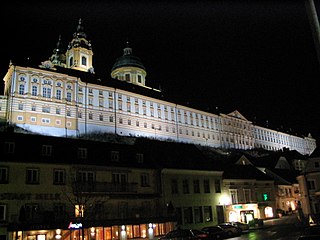
A primary school, junior school, elementary school or grade school is a school for primary education of children who are four to eleven years of age, or till twelve or thirteen years of age in some countries. It typically comes after preschool and before secondary school.

Secondary education covers two phases on the International Standard Classification of Education scale. Level 2 or lower secondary education is considered the second and final phase of basic education, and level 3 (upper) secondary education is the stage before tertiary education. Every country aims to provide basic education, but the systems and terminology remain unique to them. Secondary education typically takes place after six years of primary education and is followed by higher education, vocational education or employment. In most countries secondary education is compulsory, at least until the age of 16. Children typically enter the lower secondary phase around age 11. Compulsory education sometimes extends to age 19.

A student is primarily a person enrolled in a school or other educational institution and who is under learning with goals of acquiring knowledge, developing professions and achieving easy employment at a particular field. In the broader sense, a student is anyone who applies themselves to the intensive intellectual engagement with some matter necessary to master it as part of some practical affair in which such mastery is basic or decisive.
In the education systems of England, Northern Ireland, Wales, and some other Commonwealth countries, sixth form represents the 2 years of post-GCSE academic education, where students prepare for their A-level examinations. In England, Wales, and Northern Ireland, the term Key Stage 5 has the same meaning. It only refers to post-16 academic education and not to vocational education.

A gymnasium is a type of school with a strong emphasis on academic learning, and providing advanced secondary education in some parts of Europe comparable to British grammar schools, sixth form colleges and US preparatory high schools. In its current meaning, it usually refers to secondary schools focused on preparing students to enter a university for advanced academic study. Before the 20th century, the system of gymnasiums was a widespread feature of educational systems throughout many countries of central, north, eastern and southern Europe.
A middle school is an educational stage which exists in some countries, providing education between primary school and secondary school. The concept, regulation and classification of middle schools, as well as the ages covered, vary between, and sometimes within, countries.
State schools, or public schools are generally primary or secondary schools which are mandated to offer education to all children without charge, and they are funded in whole or in part by taxation.

A secondary school describes an institution that provides secondary education and also usually includes the building where this takes place. Some secondary schools provide both lower secondary education and upper secondary education ie levels 2 and 3 of the ISCED scale, but these can also be provided in separate schools, as in the American middle and high school system. In the UK, elite public schools typically admit pupils between the ages of 13 and 18. UK state schools accommodate pupils between the ages of 11 and 18.
Education on the Isle of Wight is provided by local education authority-maintained schools on the Isle of Wight, and independent schools. As a rural community, many of these schools are small, with average numbers of pupils lower than in many urban areas. It was decided on 19 March 2008, in a Whole Council Meeting, that the three-tier system would change into a two tier system. A report into the report on the re-organisation with proposals as to which schools would close was published in May 2008. There is also a college on the Isle of Wight and other less formal educational venues.
Eighth grade is the eighth post-kindergarten year of formal education in the US, and is typically the last year of middle school. In England and Wales, the equivalent is Year 9, and in Scotland, the equivalent is S2.
Ninth grade, freshman year, or grade 9 is the ninth year of school education in some school systems. Ninth grade is often the first school year of high school in the United States, or the last year of middle/junior high school. In some countries, Grade 9 is the second year of high school. Students are usually 14–15 years old. In the United States, it is often called Freshman year.
Tenth grade or grade 10 is the tenth year of school post-kindergarten or the tenth year after the first introductory year upon entering compulsory schooling. In many parts of the world, the students are 15/16 years of age, depending on when their birthday occurs. The variants of 10th grade in various countries are described below.
Eleventh grade, junior year, or grade 11 is the eleventh, and for some countries final, grade of secondary schools. Students are typically 16–17 years of age, depending on the country and the students' birthdays.
Twelfth grade, senior year, or grade 12 is the final year of secondary school in most of North America. In other regions, it may also be referred to as class 12 or Year 13. In most countries, students are usually the ages of 17 and 18 years old. Some countries have a thirteenth grade, while other countries do not have a 12th grade/year at all. Twelfth grade is typically the last year of high school.
Education in Norway is mandatory for all children aged 6–16.
Educational stages are subdivisions of formal learning, typically covering early childhood education, primary education, secondary education and tertiary education. The United Nations Educational, Scientific and Cultural Organization (UNESCO) recognizes seven levels of education in its International Standard Classification of Education system. UNESCO's International Bureau of Education maintains a database of country-specific education systems and their stages.

Three-tier education refers to those structures of schooling, which exist in some parts of England, where pupils are taught in three distinct school types as they progress through the education system.





